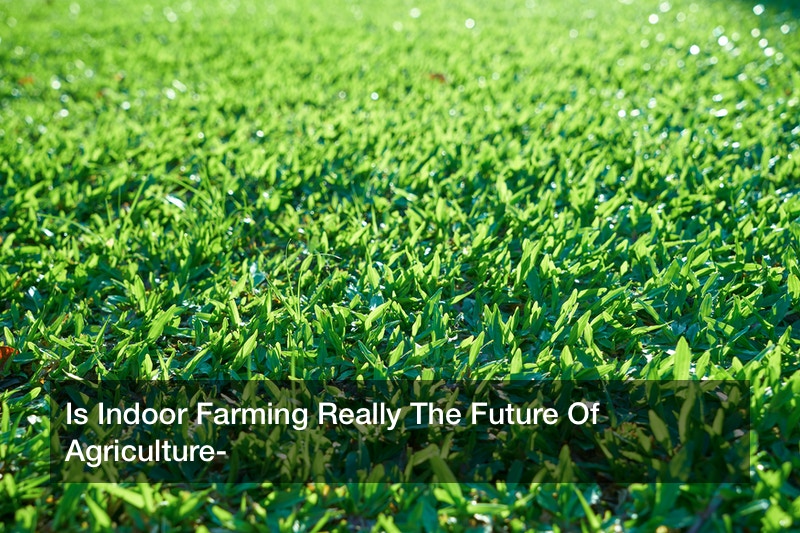
Agriculture has been one of the most essential industries not only in the U.S., but also across the entire globe, for centuries. Though the world has certainly come a long way from the way agricultural production work was done a century ago, traditional farming is still quite prevalent today. In fact, there are more than 3 million farmers across the United States.
The vast majority of agricultural growers, 84% of survey respondents, are planning on expanding their growing facilities within the next five years. However, many famers are looking for some innovative new ways to expand their farming abilities.
Indoor and vertical farming, for example, is gaining some serious momentum across the agricultural sector. Indoor farming is a method of growing crops and plants — typically on a large scale — entirely indoors. This method of farming implements advanced growing techniques like hydroponics and utilizes artificial lighting to provide plants with essential light and nutrients required for growth. A wide variety of plants can be grown indoors, but fruits, vegetables, and herbs are the most popular.
Some of the main advantages of indoor agriculture is its higher yield and water usage compared with conventional farming. For example, if everything is done correctly, a 5-acre farm utilizing a vertical farming approach could yield a yearly crop comparable to that of 2,400 acres of traditional farming.
A family of four uses roughly 400 gallons of water per day. A family of farmers requires much more water. Though water is still important for indoor and vertical farming, through water recapture and the ability to harvest evaporated water, this approach uses 97% less water, potentially saving a significant amount of money on various energy expenses.
If you’re updating your agricultural production abilities and want to utilize indoor farming methods, here are some essential growing tips for beginners:
- Control the atmosphere — “A controlled environment is one that controls all ambient or external influences, so, literally cutting off the outside world, so everything from water, to airflow, and the actual air itself is recirculated within the system,” Eric Amyot, CEO and co-founder of Modularfarms.co, a start-up developing new cutting edge solutions for commercial vertical and urban farmers.
- Keep relative humidity low — Keeping the relative humidity (rH) low is imperative for indoor gardening projects of all sizes. In order to prevent significant mold growth and reduce damaging insect activity, indoor farmers should keep rH levels below 65%.
- Utilize quality lights — Today, indoor lighting accounts for 18% of energy use in commercial buildings and 11% in homes. Obviously, indoor farming may require a lot of light, and thus, a lot of energy. “I can’t stress enough how much we’ve seen increases in crop productivity and the proper checks and balances in place for plant transpiration, canopy saturation of light, etc.,” added Amyot. “So having really good lights in a system really makes a big difference, if you’re looking at having the most yield possible. So, good quality lights is the first pillar.”
Of course, there are many problems indoor farmers face. Case in point: pollination problems. While outdoor plants may be naturally pollinated by bees or the wind, indoor farms must find creative workarounds. The USDA reported that the number of honeybee colonies managed by human beekeepers had reached a 20-year high, and some of those colonies are used to pollinate indoor crops. Other hydroponic gardeners must carefully pollinate their crops by hand, a time- and labor-intensive process.
In addition to Modularfarms.co, there are plenty of farming startups and companies that are taking their agricultural production indoors — here are some farming organizations to keep an eye out for in 2019 and beyond:
- AeroFarms: AeroFarms has taken in $138 million in funding to develop an aeroponic growing system that doesn’t rely on soil or sunlight.
- Bowery Farming: Bowery has taken in $117.5 million in funding for their high-tech approach to indoor farming that uses LED lighting, data analytics, and robotics.
- Gotham Greens: Gotham Greens has taken in around $45 million in funding to design, build, and operate commercial-scale, high-tech, urban greenhouse facilities located in New York City and Chicago.
Agricultural production will always be around and traditional farming certainly remains important for global crop production. In fact, U.S. organic food sales amounted to approximately $45 billion in 2017. But when it comes to agricultural advancements, indoor farming may hold the future for food and farming.



